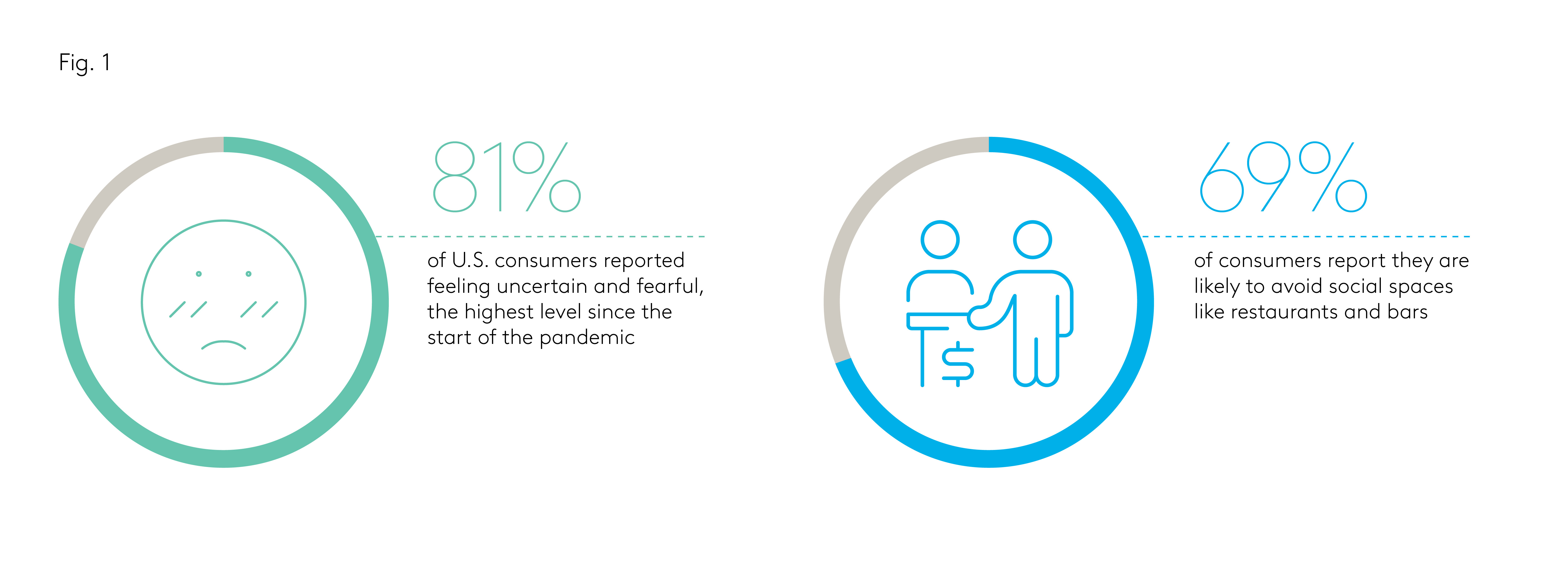After months of having few options other than cooking your favorites at home or ordering takeout, there seemed to be light at the end of the tunnel early this summer as U.S. restaurants began reopening for on-site dining. However, with COVID-19 cases not yet under control in the U.S. (at their highest levels yet in many locations), and continued economic uncertainty for many consumers, a near-term return to normal seems unlikely for the restaurant industry.
It’s not just local government mandates that are complicating the issue. In a recent Kantar survey, 81% of U.S. consumers reported feeling uncertain and fearful, the highest level since the start of the pandemic. With pervasive fear and concern, there is also a desire to avoid social spaces; 69% of consumers report they are likely to avoid social spaces.

While this situation certainly creates ongoing challenges and hardship for the restaurant industry, it offers significant opportunities for food and beverage companies to support and connect with consumers, who are in large part continuing to eat the majority of their meals at home.
Food and beverage brands can engage today’s consumer in a variety of ways:
Meet consumers where they are
Not everyone is experiencing the pandemic in the same way, either due to their location, their financial circumstance or their attitudes. To help meet a variety of needs, engage online recipe searchers with recipes for comfort classics or at-home versions of their restaurant faves as well as advice on preparing economic family meals. Partnering or supporting local food pantries to put food on tables can do a load of good for communities as well as build good will with consumers during the crisis.
Reinforce new-found cooking and snacking habits
Help your consumers find enjoyment in the experience, whether alone, with a partner or family. With kids from kindergarten to college learning 100% remotely, this is also a great time to engage them in learning life skills in the kitchen.
Partner with retailers and manufacturers
Seek opportunities to partner with online and traditional grocery retailers to create new occasions and promotions such as dinner kits for date night at home. Connect with kitchen appliance manufacturers on branded recipes or how-to booklets.
Ensure innovation is impactful
With more consumers shopping online and choosing click-and-collect or delivery, or just avoiding spending any more time than absolutely necessary in-store (less treasure hunting), ensuring innovation is impactful and supported by solid awareness-driving communication plans will be critical.
- Add or call out existing benefits that matter to consumers more now than ever before. Examples include in-pack/on-pack activities to provide entertainment, creative and nutritious ways to meet increased snacking demand, and added or amplified “good for you”/immune system-boosting ingredients.
- As some return to work or school, innovate around packaging that signals hygiene, e.g., single serve/use packs vs. shareables, on-the-go lunch options that don’t require refrigeration, etc.
- Continue driving disruption, especially if you are a smaller company/brand, carving out a meaningful space to be different. If you’re a large company/brand, enjoy the growth you’re likely seeing and find ways now to retain it mid to long term.
By meeting consumers’ needs today while cultivating new levels of cooking (and snacking!) joy, brands can realize dividends for years to come.
